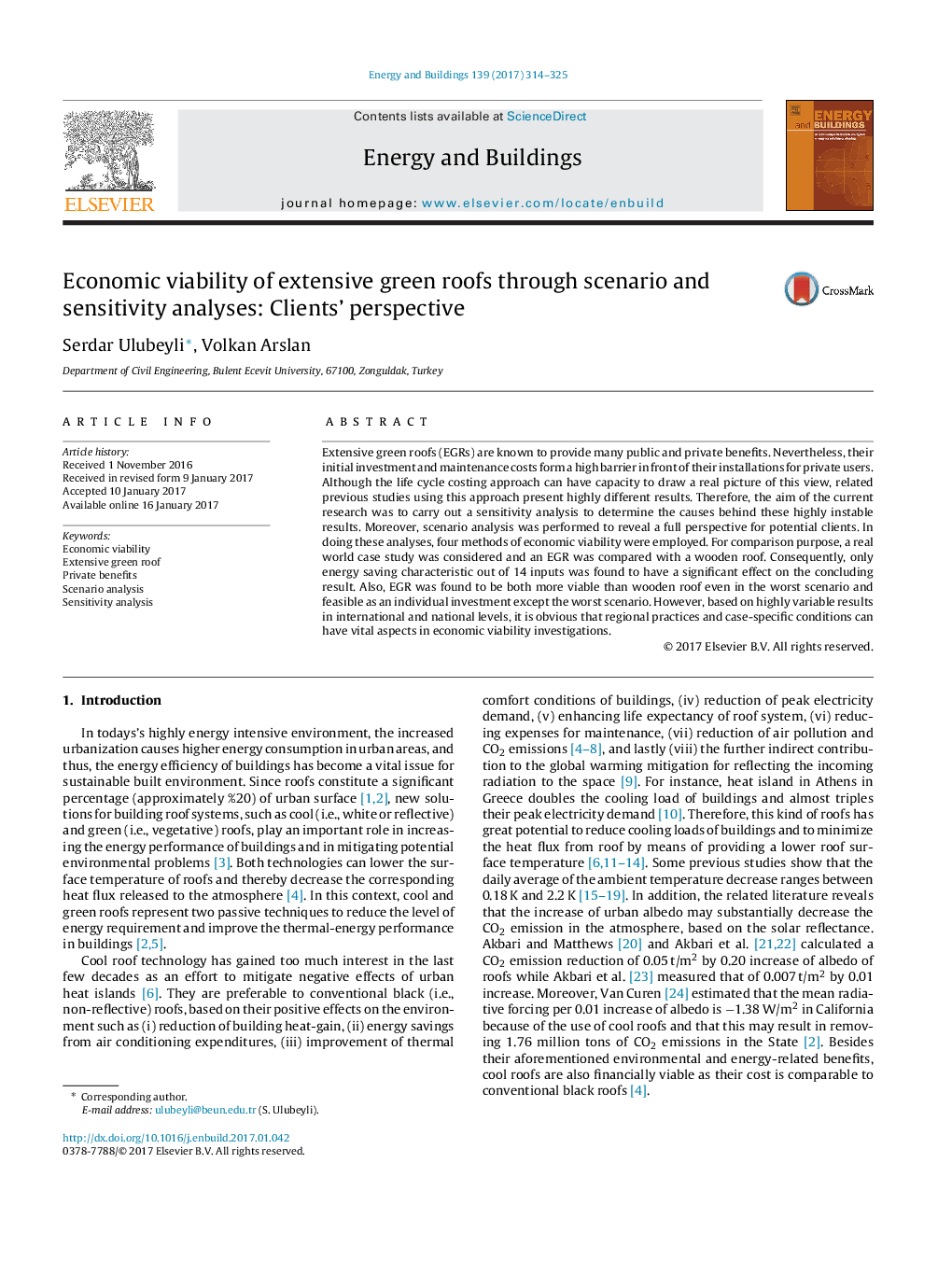| Article ID | Journal | Published Year | Pages | File Type |
|---|---|---|---|---|
| 4919327 | Energy and Buildings | 2017 | 12 Pages |
Abstract
Extensive green roofs (EGRs) are known to provide many public and private benefits. Nevertheless, their initial investment and maintenance costs form a high barrier in front of their installations for private users. Although the life cycle costing approach can have capacity to draw a real picture of this view, related previous studies using this approach present highly different results. Therefore, the aim of the current research was to carry out a sensitivity analysis to determine the causes behind these highly instable results. Moreover, scenario analysis was performed to reveal a full perspective for potential clients. In doing these analyses, four methods of economic viability were employed. For comparison purpose, a real world case study was considered and an EGR was compared with a wooden roof. Consequently, only energy saving characteristic out of 14 inputs was found to have a significant effect on the concluding result. Also, EGR was found to be both more viable than wooden roof even in the worst scenario and feasible as an individual investment except the worst scenario. However, based on highly variable results in international and national levels, it is obvious that regional practices and case-specific conditions can have vital aspects in economic viability investigations.
Keywords
Related Topics
Physical Sciences and Engineering
Energy
Renewable Energy, Sustainability and the Environment
Authors
Serdar Ulubeyli, Volkan Arslan,
